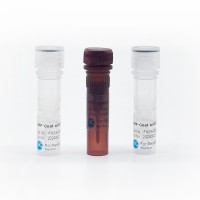Despite the enthusiasm of the first investigations of cell ultrastructure, morphological studies have since lost some of their importance for biomedical research. The development of quantitative biochemical methods has been the cause of this reduced interest in morphology. Biochemical reactions, however, take place in compartments of the cell and the extracellular matrix. This compartmentation, in an ultrastructural dimension, is the prerequisite for a systemic discharge of metabolic processes in temporal continuity. This compartmentation is provided by phospholipid biomembranes serving as support for sets of enzymes or receptors and as vessels for internalized or synthesized substances. Investigations of the biochemical processes in compartments are only possible if these compartments can be separated by ultracentrifugation or by ultrahistochemical methods. Routine preparation for transmission electron microscopy (TEM) preserves only the morphology of cells and limits the possibilities for staining to electron-dense reaction products. Furthermore, the electron beam causes considerable contamination and damage to the object. In the past decade several attempts have been made to overcome these problems in order to obtain realistic morphological representations of cells and to perform ultrahistochemistry. First of all the development of cryo-methods has made it possible to retain and preserve substances at their original site.






